2019.03.29Field Report
Being a Part of the "AKARI" Bringing Light to People Project, Report by Volunteer Employee Reporters
2017.03.10 Field Report
In March 2016, solar lanterns were donated through local NGOs and social enterprises to two areas without electricity on the island of Flores in Indonesia. We visited the island to see how the solar lanterns are being used and how light has brought about change to villagers' lives.
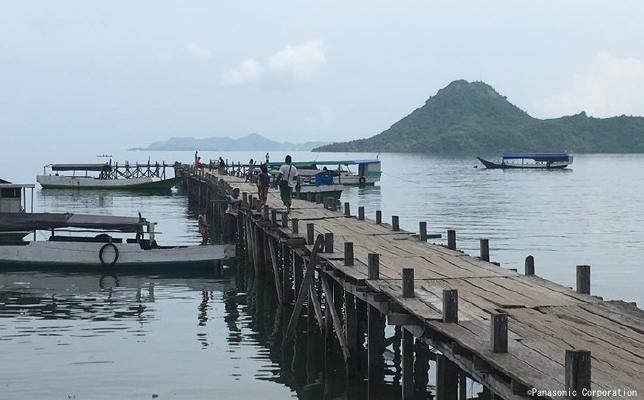
This is Hal Okuda of the CSR & Citizenship Group.
Flores Island is located about an hour and a half east by plane from the island of Bali. As arriving at the airport, we headed for the westernmost port town in Island, Labuan Bajo. This town is only two-hour boat ride away from Komodo National Park, registered as a UNESCO World Heritage Site in 1991. People from all over the world stop by Labuan Bajo to go see the largest lizard on this planet, Komodo Dragon.
Last year, solar lanterns were donated to 13 villages mainly in the Komodo region through a local social enterprise, Tinamitra Mandiri, as part of their Komodo Water Program. This social enterprise is active in Komodo, Flores and two other regions in Indonesia, and operates various social businesses such as providing access to affordable clean water and promoting natural gas delivery to support the lives of those living in villages lacking the infrastructure.
On the recent trip, we visited Pasir Panjang, an administrative village of about 400 households, comprised of the three sub-villages of Rinca, Kerora, and Kukusan. This is an off-grid area with absolutely no electricity supplied by power companies, and the people used a power generator to generate light at night before the solar lanterns were donated.
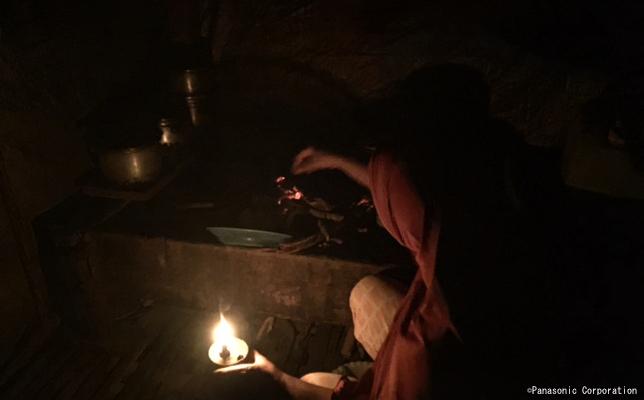
Woman cooking in the dark with only the light of a kerosene lamp
Through Tinamitra Mandiri, solar lanterns were delivered to homes, churches, health centers, schools, mosques, and meeting halls in the villages and we went to see how they are now being used in their respective places.
Until now, the health center in Rinca was open only from 8 a.m. to 3 p.m. Services were provided at night during emergencies, in which case the patients had to bring their own kerosene lamps for light. Of course, the light was not very bright. "Ever since our health center was set up with the solar lanterns, we can examine more patients and expecting mothers in a bright room even at night," commented the doctors and nurses.
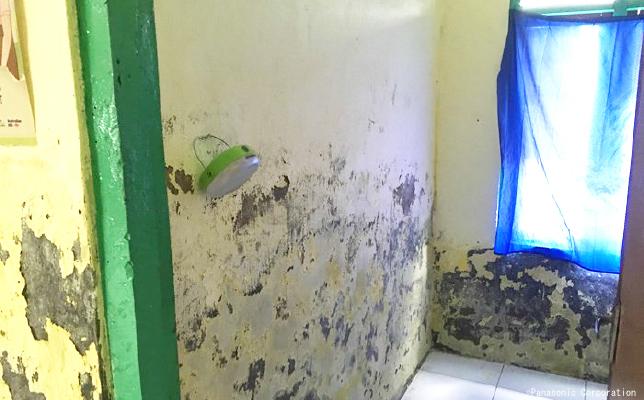
Solar lantern hung on the health center wall
Children's studying environments have also improved and this has helped boost the children's motivation to learn. Prior to the donation, children could study only within a limited window of time during the day. Now, schools are open at night for students preparing for standard examinations and many children take up such opportunities to learn. Furthermore, students who are eager to learn more had to pay for kerosene lamp fuel in order to participate in the after-school classes on Friday nights, but they can now attend for free under the light of solar lanterns.
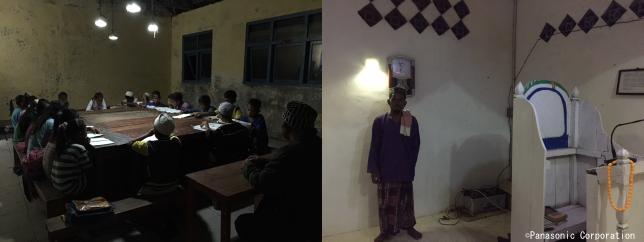
(Left) Students attending a night class in preparation for exams
(Right) At a mosque in Rinca, people were reading the Koran at night
Our next destination was the village of Ilebura on the eastern part of Flores Island. It was 10 p.m. by the time we arrived in the village, four hours later than scheduled, but villagers holding solar lanterns greeted us warmly and a welcome ceremony commenced immediately.
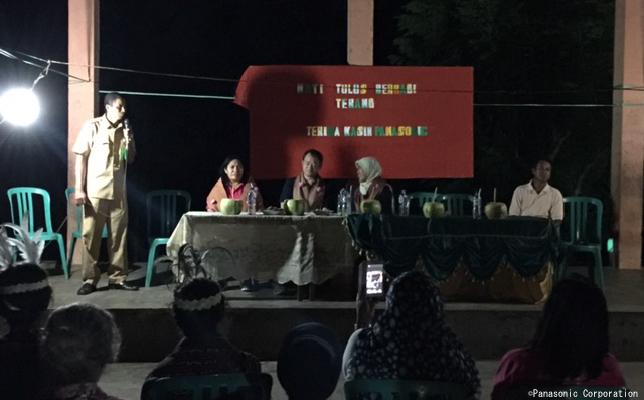
A big welcome ceremony despite the late hour
Indonesia Midwives Association (IMA), a recipient organization, certifies the reported 335,000 midwives in Indonesia. IMA deploys ambulances from neighboring villages during emergencies and builds mutual support systems for midwives as well as information sharing systems so that entire communities can support expecting mothers. The recent donation sent solar lanterns especially to midwives working in East Flores district.
The village of Ilebura, where the solar lanterns were donated, has an extremely low supply of electricity even in comparison to its neighboring villages. Despite the availability of power grids, there was no electricity in the lines, and people were forced to live inconvenient lives, unable to do much once the sun had set.
Women who make their living through production of Ikat tapestry, a traditional fabric of East Flores, could not pay for kerosene lamp fuel and could only work in early morning or during the day. But now solar lanterns allow them to work at night as well. Fishermen who are the breadwinners of the household are also happy that they can now repair fishing nets at night, which makes fishing the next morning much more efficient and productive.
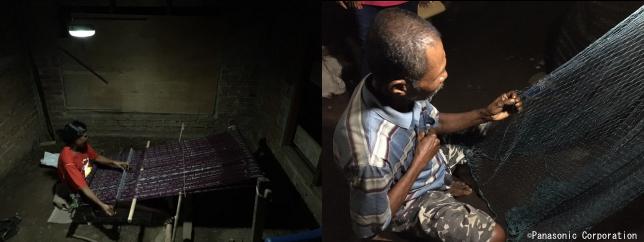
(Left) Woman concentrates on creating Ikat tapestry, a signature traditional fabric in Asia
(Right) A fisherman carefully repairs his net under a light
Also, a women's group of former teachers who run a temple school for children provide extra classes in the evening, and told us with bright smiles, "We don't need money for fuel anymore and we are so grateful."
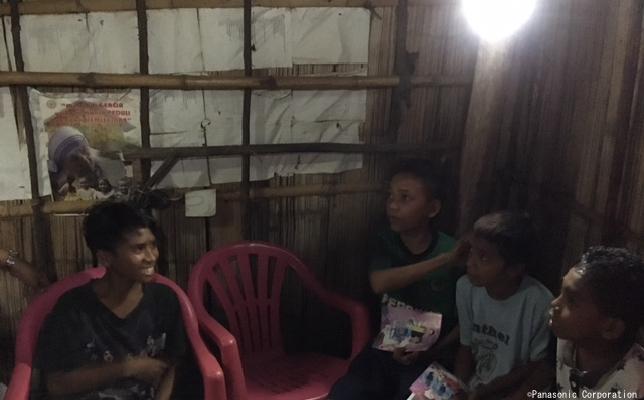
More and more children attend the brightly-lit temple school
We saw how solar lanterns are not only changing individual lives but bringing about major change to entire villages. The donation also caught the attention of the government and now, the electricity supply has gone from zero to once every two days. The villagers were pleased by the fact that the government had taken notice of their village.
This project does not end when the donation is completed; instead, as much as possible, we try to visit our recipients to see with our own eyes how the delivered lights are being used. In the recent visit, we learned how the lights have shifted people's lives in a more positive direction. Going forward, we will listen to the voices of more local people and organizations that have extensive knowledge of local people's lives so that we can deliver solar lanterns to those who need them.